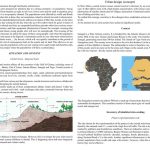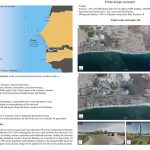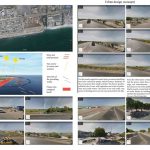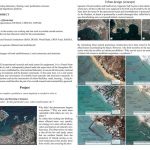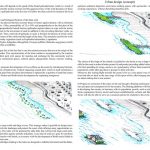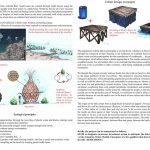SEME-BIOSE by Maktub | International Architecture Awards 2019
Our beautiful planet is facing two major problems today. These are climate change and the population explosion. However, macro-economists tell us that Africa will be a major contributor to the exponential population growth to come and will host about a quarter of the world’s population in 2050. In addition, with 46% of its population living in extreme poverty, a fraction of 38 coastal states out of 54 countries, and the sea swallowing in some areas more than 10 metres per year, the situation is all the more intriguing. It is even more so for us, given the situation of the populations of these areas, who derive their income mainly from the sea. The case of youth has become such an emergency in recent years that crossing the Mediterranean by canoe becomes an option for many of these young people. Faced with this situation, we see the need for action.
SEME-BIOSE is a pilot project whose objective is to mitigate in the short term the effects of erosion on the Senegalese coast, one of the most affected countries in Africa. The experimental site is a 4 km coastal strip from Rufisque to Bargny marked by erosion and the strong presence of industries. We propose an alternative based on a “land-sea” approach. It is a question of being part of a protection framework that integrates coastal development through a set of strategies both on land (dunes,…) and in water (reefs,…) that combine to reduce wave action, prevent erosion, generally rebuild the coast and promote the development of sea-related activities.
In the short term, the project aims to increase the economic, social and ecological resilience of the Senegalese coastal populations. The different interventions are organized in five strata: The demolition of ruins and dangerous buildings located at a distance from the waterfront allows the beach to be freed and reduces the pressure on it. Eco-domains made of local materials make it possible to relocate displaced populations inland on hollow teeth. The use of windbreaks makes it possible to naturally restore the dune line on the back beach and create a resilient park. The creation of coral reefs and the restoration of mangroves promote biodiversity development, wave attenuation and optimize sediment deposition in shallow waters. The creation of artificial islands makes it possible to control swells and prevent sand from leaving the coastal system while developing economic and social activities. An extension offshore, through a floating architecture aims to optimize and democratize activities related to the blue economy while respecting the environment. In addition, the foundations of the footbridges leading to the islets are designed to stabilize the beach and deltas, optimize sediment deposition and create walking spaces with spectacular views of the landscape and extraordinary experiences, without disturbing the drifting shoreline, which is itself a balance. So, as the sea advances, we emerge. Life with the sea ceases to be a fight, and becomes a symbiosis.
The origin of the title comes from a deep desire to launch an appeal! Not just a call to action, but also and above all a call to conscience. Indeed, it is not a question of “when to sow?”, but rather of”(what, how and why) sowing? “because you sow every day and every moment, and the results are there sooner or later. Sowing is an act that involves strong responsibilities that are often overlooked. Sowing is investing for ourselves and for others. We therefore see the need to sow in the hearts of men values that will make them responsible and virtuous citizens. This title also evokes the symbiosis that we put forward in our project, between blue and green, between land and sea, but above all between man and nature.
Briefly, the project can be summarized as follows : SEME to designate awareness, investment, action to anticipate the future and BIOSE for Biodiversity, Integrity, Order, Health, Emergence are the qualifiers that best define the project; hence the title “SEME-BIOSE”.
Architect: Maktub
Winner – Category: Urban Design
Project Location: Rufisque, Bargny
Project Team: Franklin Hermann Sokning Yemeli, Mesmer Ndienang Dapabko
Country: Cameroon




